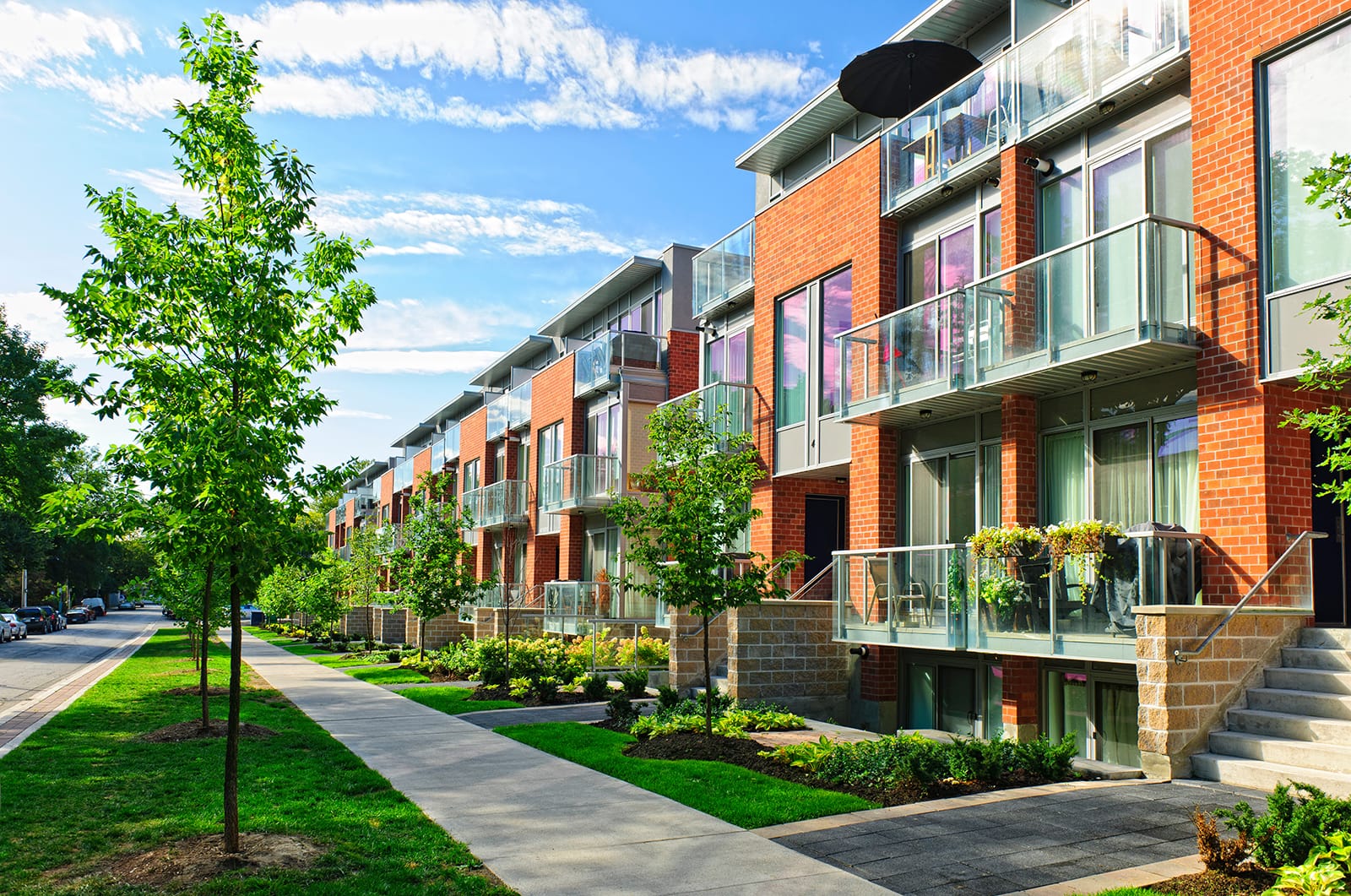Policy
'Missing Middle' Gains Ground As Localities Face Housing Dearth
Washington state’s sweeping zoning reform signals momentum for restoring housing options that were once common but have since been zoned out of existence. As home prices soar and housing shortages deepen, localities face legal hurdles and community pushback as they strive to add density solutions.

In Washington state, cities are racing toward a June 30 deadline to update their local zoning ordinances to comply with a state law passed in 2023 to spur the development of missing middle housing.
The state law effectively ends single-family zoning. Cities must now amend local zoning codes to allow duplexes, triplexes, and quadplexes in historically single-family neighborhoods and add six-unit buildings close to public transit.
Washington's fledgling statewide zoning policy is modeled after those recently gaining ground in states and cities nationwide. It moves beyond a restrictive – often discriminatory – past to increase what the American Enterprise Institute Housing Center describes as “light-touch density,” aiming to increase housing supply and improve affordability.
California is the most notable state to make the change because of its long-standing, dramatically deepening affordability problems and the fact that its sheer economic size and cultural impact tend to ignite or accelerate societal trends. Oregon, Maine, Montana, and Nebraska have adopted similar zoning policy shifts. Minneapolis, Buffalo, and Salt Lake City are among the cities that are leading the charge to address and codify missing middle housing statutes.
Long-seeded initiatives behind missing middle housing gained momentum during the COVID-19 pandemic. As housing prices soared, cities were forced to reconsider restoring housing that had been zoned out of existence for decades.
“Cities evolve, and zoning doesn't evolve with it at the same pace,” Justin Julian, senior architect with Dahlin Architecture in Bellevue, WA. “So, when you've got more people, more demand, prices go up.”
Patrick Risk, a residential land broker with real estate firm Northmarq in Salt Lake City, described zoning this way: “Zoning has kind of stolen the freedom and property rights of the individual. Zoning needs to be less restrictive.”
How Single-Family Zoning Took Over
As cities swelled with new residents in the early 20th century, a quiet revolution occurred in neighborhood organization. The idea of separating different types of housing, especially single-family homes, gained traction – often embedding racially exclusionary rules. Over time, this preference, codified in zoning laws, became deeply woven into the fabric of urban and suburban planning.
In 1916, Berkeley, CA, implemented one of the first municipal ordinances featuring exclusionary single-family zoning. Throughout much of the 20th century, a planner named Harland Bartholomew was an influential purveyor of single-family zoning, encouraging codifying lines that dictated where detached houses could exist, excluding other types of housing.
Bartholomew became the first professional planner for a city when he was hired in Newark, NJ, in 1914 and then moved to St. Louis two years later. By the time he retired in 1961, he had established a consulting firm that prepared comprehensive plans for more than 500 cities and counties around the country. He remained a consultant with the firm until his death at age 100 in 1989. By then, the firm had completed some 6,000 professional assignments.
“There is not one American city that does not show the results of his work, directly or indirectly,” Eldridge Lovelace, an employee and later partner with the firm for 46 years, wrote in “Harland Bartholomew: His Contributions to American Urban Planning.”
Housing was central to his planning because he believed it had the greatest impact on a city’s population. In Bartholomew’s view, if streetscape housing looked bad, the city looked bad.
He defined good housing as single-family detached homes in neighborhoods with parks, playgrounds, community centers, and good schools. Walkability and proximity to jobs, retail, and services weren’t part of his plans. Those were zoned into separate areas to be accessed by car.
That practice veered away from the neighborhood grocery store or other shopping and services that had been the hallmark of old neighborhoods.
Cities operated in the context of the 1926 Supreme Court case Euclid v. Ambler Realty Co., which provided the legal foundation for zoning and confirmed that cities could divide areas as they saw fit through zoning. Single-family zoning is often associated with how cities sought to segregate racially.
The ruling concluded, in part, that the "coming of apartment houses, which has sometimes resulted in destroying the entire section for private house purposes,” delayed the development of detached housing sections. The ruling characterized an apartment building as a “mere parasite.”
This thinking is what has fueled NIMBY's fights for decades over allowing apartments near single-family neighborhoods.
During World War II, a massive housing shortage blew up because supplies were geared toward the war effort and ballooned after the war. The "American Dream" became synonymous with the single-family home, and federal policies – along with the booming car culture – propelled the growth of sprawling suburbs. Developers found it most profitable to build vast tracts of single-family homes.
The result was a housing landscape conspicuously absent the "missing middle" —the duplexes and townhouses that once provided diverse and attainable housing options.
Price Surges Spark Need to Fill the Middle
Sun Belt and Western states led the country in wild increases in prices. According to the Freddie Mac House Price Index, in Washington state, Walla Walla home prices led the state with an average increase of 60.6% from 2019 to 2024. The Seattle area averaged about nearly 48%.
According to the index, Washington's situation was a bit better than Naples, FL's, where home prices rose 87% over the period.
Still, dramatic home price surges converged with record economic and population influxes over the period amid a growing shortage of housing. Online marketplace Zillow estimates the shortage to have reached 4.5 million homes.
The simple fact is that there are not enough homes in this country, and that's making homeownership out of reach for too many families," Orphe Divounguy, a senior economist at Zillow, said in the report last June.
Advocates for resuscitating missing middle housing in urban and infill environs near job centers have gained a toehold, and their efforts continue to show promise and momentum. However, there have been detractors and legal battles. Arlington County approved missing middle zoning in March 2023, and a handful of homeowners who opposed it sued the county. The county, though, started approving permits for the housing. A judge ruled against the county last October, and the county appealed. The matter has yet to be settled.
Montana passed laws in 2023 allowing duplexes, accessory dwelling units, and other multifamily building types in single-family zoned areas. A lawsuit followed, but the state eventually won the legal battle.
In Gainesville, Florida, the city council approved ending single-family zoning in certain areas in 2022. Since then, a newly elected council has reversed the decision.
Battles haven’t dampened the push for more missing middle housing. And proponents note that solutions aren’t necessarily easy.
“There’s no magical pot of excess profit that can make housing more attainable just by allowing more density,” Atlanta architect Eric Kronberg, wrote on LinkedIn. “If we want affordability without relying on federal subsidies, we need to be really intentional about what types of housing we approve.”
In his view, that means small-scale cottages and two-story to three-story walk-ups that are tightly packed in walkable areas, adding that “massive parking requirements eat up land (or cost a fortune to build), making affordability nearly impossible.”
Kronberg and others aren’t pushing for a car-free environment.
But we do need more neighborhoods where people can walk, bike safely, and access transit—basically, the kinds of places we built before 1929,” he wrote.
Much of the focus is on infill development that blends in more with the surrounding area. Toll Brothers has two such projects underway in Redmond and Kirkland, WA, outside Seattle. Canopy Cottages and Centre Cottages are two dense developments.
They aren’t strictly missing middle because they are single-family detached. Still, the houses are built in a dense configuration around courtyards. Prices starting at $1.26 million for Canopy and $924,000 for Centre indicate that those are largely for people downsizing and still wanting luxury amenities.
However, the pandemic added a wrinkle to the quest for a missing middle.
Flexible work schedules allowed people to live outside the city. The challenge has been the lack of amenities those living outside the city enjoyed when they were closer to a city’s downtown.
That phenomenon has driven a new planning thought process.
What can we do within these neighborhoods to create almost these satellite towns or cities?” Julian said. “There's this need for these almost satellite kind of towns. You're close to the city that you're potentially working at twice a week or three times a week, and for the times that you're working at home, you have this walkable community.”
Master-planned communities allow for the building of the missing middle, along with walkability and amenities.
A healthy neighborhood is one that has a variety of housing types,” Northmarq land broker Patrick Risk adds. "Someone could move into a master-planned neighborhood, either buying or renting, move up to a bigger residence when needed and then move down when needed, similar to the old neighborhoods of yore. People could do the entire life cycle in the same neighborhood.”
MORE IN Policy
Together On Fixing Housing: Solve Two, Start the Rest
NAHB Chief Economist Robert Dietz and Lennar Mortgage President Laura Escobar argue that the housing crisis won’t be solved by magic. It starts with a unified focus on two or three priorities—a rallying cry for builders, developers, lenders, and policy-makers.
Zone Offense: North Carolina Moves To Fast-Track By Right Housing
North Carolina legislators are pushing a bipartisan bill that could fast-track housing where people need it most: near jobs and transit. Richard Lawson breaks down what it means, how it compares to other states’ moves, and why developers are watching closely.
Immigration’s Double Role in Homebuilding’s Present, Future
Immigrants are key to solving both the labor crunch and -- believe it or not -- an eventual household demand shortfall. But only if policy allows them to stay, build, and thrive.
